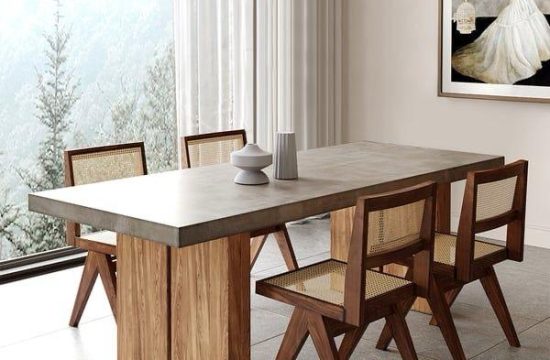An estimated 3,000 children a year are treated for injuries caused by tipped-over furniture or falling TVs
PHILADELPHIA — Furniture executives and consumer safety advocates are working together on voluntary safety standards to prevent certain case pieces from tipping over and injuring children.
An estimated 3,000 children a year are treated for injuries caused by tipped-over furniture or falling TVs. About five a year die from the injuries or from resulting suffocation, according to the U.S. Consumer Product Safety Commission.
“We don’t want to see anyone get hurt,†said John Conrad, vice president of merchandising for importer Powell Co. “The first thing on our minds when we develop a new piece of furniture is safety.â€
Conrad is a furniture member on a committee of the American Society for Testing and Materials, which met in March to discuss and revise a proposed standard for testing the propensity of dressers, armoires and drawer chests to tip over.
The proposal is known as ASTM Active Standard F2057.
The committee already has eliminated from consideration shelving units, such as bookcases or entertainment centers, nightstands and under-bed drawer storage units.
The danger of tipping generally arises when a child tries to climb a bedroom furniture piece, usually by pulling out drawers or doors to act as steps. The weight of the drawers and child can cause the case to tilt forward and tip over, falling on the child. Heavy items on top of the case, such as TVs, also can fall off.
When designing a product, especially for kids, a manufacturer has to ask safety questions, said Glenn Prillaman, senior vice president of sales and marketing for Stanley Furniture and its Young America youth furniture division. How far out do the drawers extend? Are doors too high up? Is the piece wide and deep enough to have a stable base?
It comes down to the center of gravity. A piece won’t tip over unless its weight shifts to the front, sides or back. A chest with the TV at the front edge is more likely to fall forward than one with the TV pushed back. Pulling out drawers shifts the center of gravity.
Doors at the bottom of a case don’t shift the weight as much as doors higher up, and wide doors, when swung out, create a bigger potential problem than narrow doors. The same applies to drawer depth: the farther the drawer pulls out, the more it can affect a piece’s balance, particularly if a child steps on it.
Prillaman said manufacturers can make cases more stable by adding heft to the back or base of the piece, but that adds cost. Some companies would rather cut corners than worry about consumer safety, he said.
That’s the main reason he’d like to see an ASTM standard adopted as law by the CPSC.Â
“We as an industry have to care about safety,†Prillaman said. “It shouldn’t be a company thing, it should be an industry thing.â€
Regardless of whether the standard is voluntary or becomes law, Powell’s Conrad believes the ASTM committee is headed in the right direction. The guidelines proposed are “doable by manufacturers and repeatable by testing organizations,†he said.
Bobby Puett, co-owner of Diversified Testing Labs, which checks bunk bed safety for many youth furniture manufacturers, believes a voluntary standard should be simple enough that factories wouldn’t need his company to test for compliance.
With Puett’s input, the test under discussion would entail putting a 50-pound weight on a pulled-out drawer to see if the piece tips over. Fifty pounds was chosen because that would cover most kids up to age 5. The committee believes an older child is more likely to understand the dangers of climbing on furniture, and is bigger, stronger and less likely to be seriously injured if the piece does tip over. Most injuries involve children under 5.
Some had suggested that testing take place with all the drawers open at the same time, but others countered this doesn’t simulate real-world conditions, since a child couldn’t climb up the drawers like steps if they were all pulled out.
In a home, the case likely would contain clothing or other items, making it more stable than in a factory.
Prillaman said Young America’s youth furniture already complies with this test and also comes with an anchoring kit that allows pieces to be fastened to a wall. Some manufacturers include a nylon strap that can be screwed into the case and wall. It isn’t a strong support, but designers say a case doesn’t need much help to stay put.
Such devices could be part of the final standard.
In some cases, a child gets to the top of a dresser and grasps a mirror to help stand up, said Josh Garrison of Garrett Mirror Support Co. The mirror can break loose, causing the child to fall off the dresser, or the mirror can crash down on the child.
Garrison said he has been attending committee meetings to see if it will adopt a mirror support test. Some factories use scrap wood to attach mirrors, and there’s no rule about how strong the support should be.
It’s not about getting factories to use his product, Garrison said, but about getting everyone to agree on a standard no matter how they attach the mirror. So far, the committee hasn’t set a test for mirror stability.












